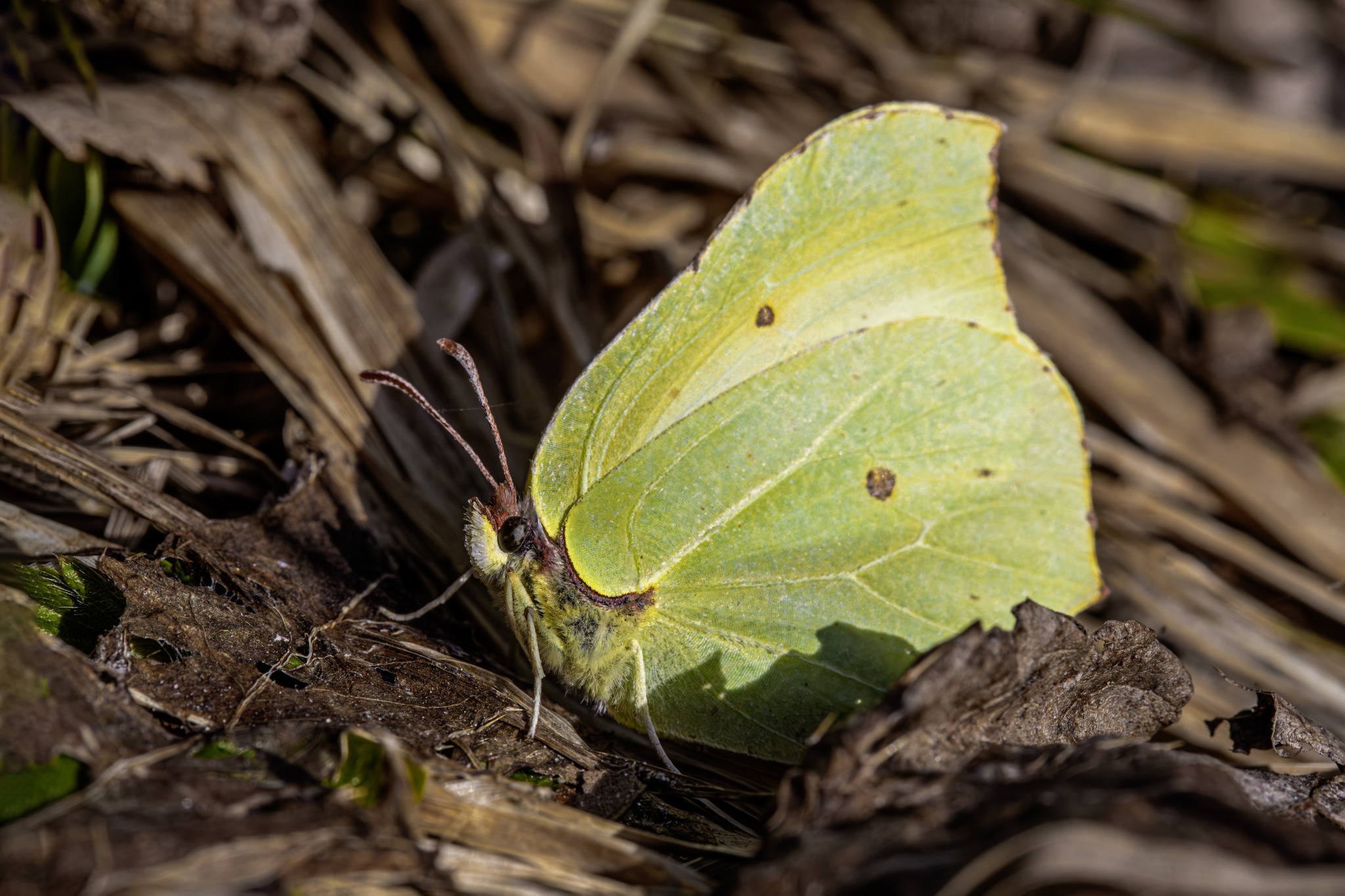The Common Brimstone (Gonepteryx rhamni) is a striking butterfly in the family Pieridae, known for its vivid yellow coloration and long, leaf-shaped wings. Often regarded as one of the first butterflies to appear in spring, it is a symbol of renewal and resilience in temperate regions.
Physical Description
- Wingspan:
- 60–74 mm, with males generally larger and brighter.
- Coloration:
- Males: Bright lemon yellow.
- Females: Pale greenish-white.
- Both sexes have small orange spots near the center of each wing.
- Wing Shape:
- Long and pointed, mimicking the appearance of leaves, aiding in camouflage when resting.
Behavior
- Flight:
- Strong and purposeful, often covering significant distances.
- Activity Period:
- One of the longest-lived butterflies, adults emerge in late summer, overwinter, and are active from March to October.
- Feeding:
- Adults primarily feed on nectar from wildflowers like dandelions, primroses, and clover.
Habitat
- Found in a variety of sunny, open habitats, including:
- Woodlands, forest edges, and clearings.
- Hedgerows and gardens.
- Meadows and grasslands.
- Prefers areas with abundant food plants and shelter for overwintering.
Life Cycle
- Eggs:
- Laid singly on host plants like buckthorn (Rhamnus cathartica) and alder buckthorn (Frangula alnus).
- Larvae:
- Bright green with faint white stripes, blending perfectly with leaves.
- Pupae:
- Green and angular, resembling a leaf to deter predators.
- Adults:
- Emerge in summer, overwinter in dense vegetation, and mate in spring.
Distribution
- Widely distributed across Europe, parts of North Africa, and Asia.
- Thrives in temperate climates, ranging from lowlands to mountainous regions.
Conservation Status
- Classified as Least Concern, with stable populations in most areas.
- Local declines may occur due to habitat loss and the removal of buckthorn, its host plant.
Ecological Role
- Pollination:
- Feeds on nectar and contributes to the pollination of early-blooming flowers.
- Food Source:
- Preyed upon by birds, small mammals, and predatory insects at various life stages.
Interesting Facts
- Master of Camouflage:
- Its leaf-like wing shape and coloration help it evade predators when at rest.
- Early Sign of Spring:
- One of the first butterflies to emerge in spring, often before most flowers bloom.
- Long Lifespan:
- Adults can live up to 10 months, one of the longest lifespans for butterflies.
Summary
The Common Brimstone (Gonepteryx rhamni) is a resilient and adaptive butterfly, perfectly suited to its environment. Its bright colors and long lifespan make it a welcome sight across Europe’s landscapes. Preserving its habitats, particularly those with buckthorn, is essential for ensuring the survival of this graceful and iconic species.
Visited 822 times, 6 visit(s) today
Views: 1568
Subscribe to the newsletter:
